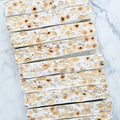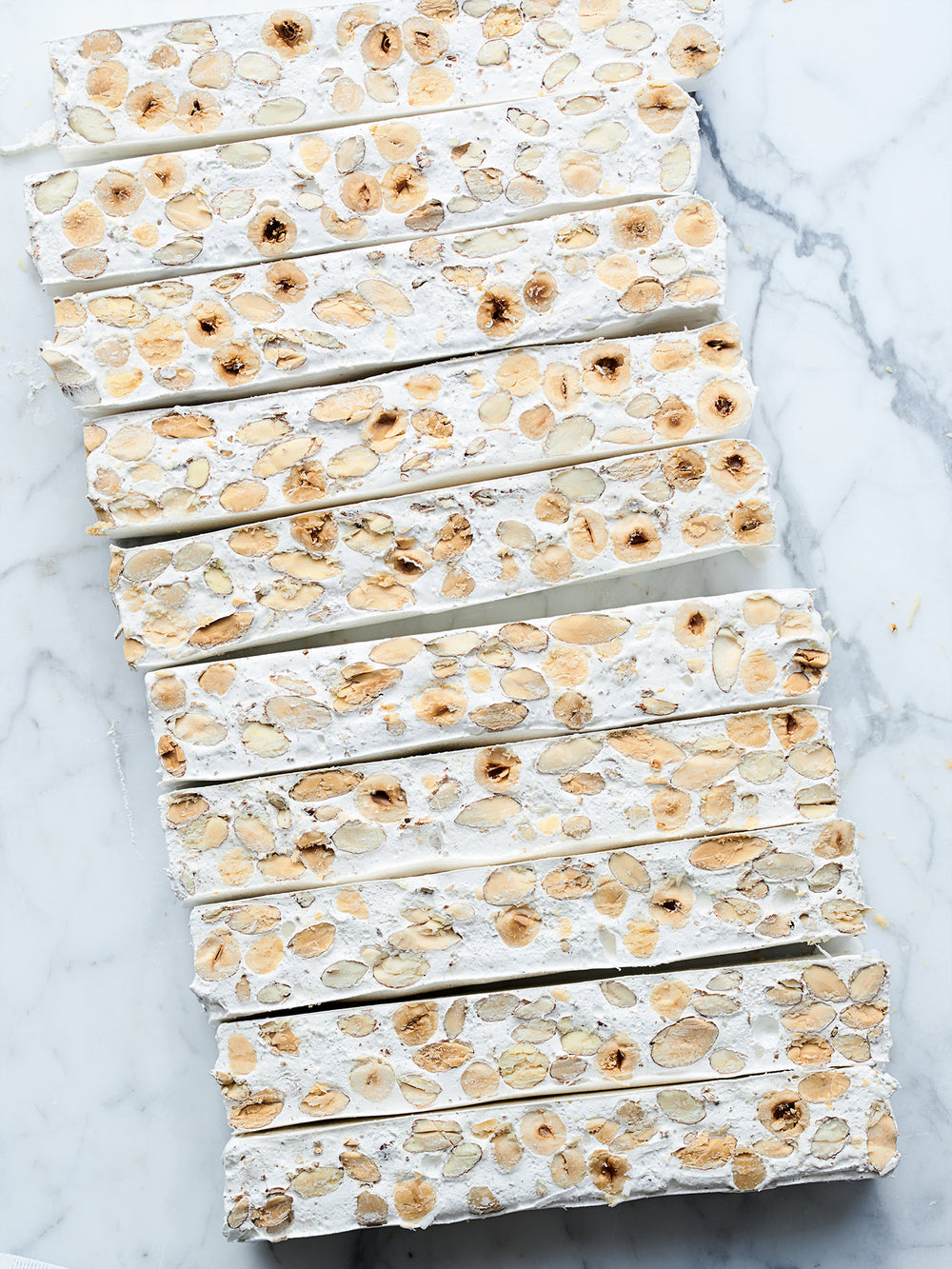Popular searches
Main menu
recipes menu
recipes
locations menu
locations
shop menu
shop
search
Popular searches
Nougat can range in texture from soft to firm, depending on how the temperature of the sugar syrup: the higher the temperature, the harder the nougat. Ours falls into the soft-but-chewy camp: it’s still a little firm, but won’t break your teeth. Making your own nougat might seem a bit intimidating, but don’t be put off: the results are hugely rewarding and (as is always the case when cooking with sugar) it’s just about being organised and staying on top of temperatures and timings.
| 2 | sheets (31 x 23cm) edible rice paper (or wafer paper, made from potato starch; or baking parchment) |
| 400g | whole raw almonds, skin on |
| 260g | whole blanched hazelnuts |
| 2 tbsp | whole aniseed (optional) |
| 300g | caster sugar |
| 200ml | water |
| 270g | liquid glucose |
| 60g | orange blossom honey (or another floral variety) |
| 25ml | pernod or ouzo (or another aniseed liqueur) |
| scraped seeds of 1 vanilla pod | |
| 1/8 tsp | salt |
| 95g | egg whites (from 3 medium eggs) |


Tag @ottolenghi on Instagram and hashtag it #ottolenghi so we can see all the deliciousness!
Follow @Ottolenghi on Instagram and tag your images with #Ottolenghicookoftheweek
Be the first to add a cooking note